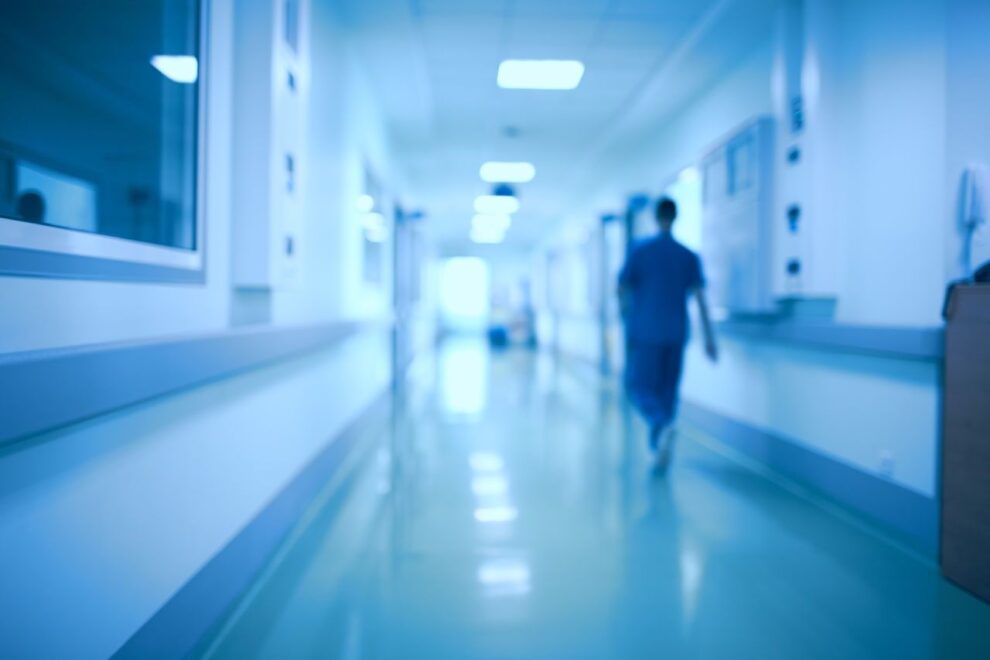Scotland’s winter death toll last year was the highest for more than 30 years, figures have revealed.
Data from National Records of Scotland (NRS) showed there were 24,427 deaths registered between December 2022 and March 2023 – 11% more than the previous winter and the highest since 1989-90.
It came as Health Secretary Michael Matheson said the country faced “extremely challenging” months ahead.
He made the warning as he announced the government’s winter resilience plan.
The minister announced at Holyrood an additional £50m in funding for the Scottish Ambulance Service to help deal with increased demand, as well as plans to expand Hospital at Home care.
The NRS figures showed there were 4,137 additional winter deaths between December 2022 and March 2023 – the seasonal increase in mortality that occurs between December and March.
This is calculated by comparing the death total for this period with the average number of deaths for August to November and April to July – the two four-month periods immediately before and after the winter.
This seasonal increase in mortality was “considerably higher” for 2022-23 than the previous year, NRS said, but was lower than both the winters of 2017-18 and 2020-21.
The cause of death with the largest seasonal increase was dementia and Alzheimer’s disease accounting for 640 additional deaths.
There were 310 additional deaths as a result of Covid-19.
Daniel Burns, NRS’s head of vital events statistics, said the increase in winter deaths “may be partly driven” by Scotland’s ageing population.
He added: “Winter months generally see more deaths than other times of the year, however, the seasonal increase in winter mortality fluctuates year on year.”

Scottish Conservative health spokesperson Sandesh Gulhane pointed to the latest accident and emergency waiting time figures, adding: “All the signs once again point to another disastrous winter for our NHS under the SNP.”
Mr Matheson said it would be “inaccurate” to suggest that the increase in deaths could be a reflection of accident and emergency units in Scottish hospitals.
The A&E waiting time data shows that in the week ending October 15, 66% of A&E patients were seen and either admitted, transferred or discharged within four hours.
The Scottish government targets 95% of patients attending A&E to be dealt with within four hours. Performance against this aim has been largely unchanged for several weeks.
Meanwhile, 1,046 patients – some 4.1% – spent longer than 12 hours in an emergency department.
Mr Matheson said there were a “variety” of reasons for an increase in the winter mortality rate, including respiratory illnesses and bad weather.
‘Difficulties and challenges’
Scottish Labour health spokesperson Jackie Baillie pointed out that delayed discharge reached its highest ever rate last year and remained high in August, affecting 1,808 patients.
Mr Matheson said that mortality rates had risen across the UK and said Westminster austerity policies over the past decade had led to deaths due to service cuts.
He said the government had “learned lessons” from the challenges it faced last winter.
The health secretary added: “However, I wouldn’t be foolish enough to come here and suggest that this will resolve all of the issues, that this winter plan will make sure that we won’t have pressures in the system, that everything will go perfectly.
“There will be difficulties and challenges in the system.”

As well as a plan to increase funding in the Scottish Ambulance Service, Mr Matheson announced plans to recruit for 317 frontline staff, as well as call centre workers.
He told MSPs care for patients in their own home would be improved, with an extra £12m funding for Hospital at Home to expand these services – providing capacity for an additional 360 beds.
The minister said this would reduce pressure on A&E and “throughout the system”.
More than 1,000 nurses, midwives and allied health professionals have joined NHS Scotland in the last two years due to £15m in Scottish government investment, Mr Matheson said.
He told MSPs a further £3m will lead to 250 registered personnel being employed – some of whom will be in post this winter.
‘Desperate as it is dangerous’
However, opposition leaders have said the move will do little to address an NHS staffing crisis, with 5,600 nursing and midwifery posts unfilled as of September.
Scottish Liberal Democrat leader Alex Cole-Hamilton said: “The warnings from NHS workers are as bad as they’ve ever been.”
He said staff are being put under pressure that is “desperate as it is dangerous”.
Campaigners at Age Scotland said the number of deaths last winter was “extremely concerning”.
A spokesperson for the charity added: “The combination of the cost-of-living crisis, pressures on health and social care services, and spikes in flu and Covid-19 have had a severe impact, particularly on older people.”
Last winter was often referred to as the worst in the history of the NHS, and with no let-up in pressures over the summer months, doctors say they have real concerns about what this winter will bring.
Already there are queues of people waiting too long in emergency departments to be moved into hospital for further care, that leads to ambulance crews being stuck outside hospitals instead of getting back on the road to answer more 999 calls.
Much of the log jam comes from patients who are medically ready to leave hospital but who can’t get home because the right social care is unavailable.
A lot of work has been going on to improve access to care in the community. Services like Hospital at Home aim to deliver hospital level care to patients without the need for them to be admitted.
There are now GPs and other specialists working with the Scottish Ambulance Service to help people who call for an ambulance find the right help for them, and often it does not require a visit an A&E.
We can play our part by getting vaccinated, if eligible, against Covid and flu, and by only going to A&E if it is a life-threatening emergency.
But the biggest challenge for the NHS and social care this winter will be staffing.
Spending more money to extend initiatives still requires more trained staff, and there are simply not enough.
Source: BBC











